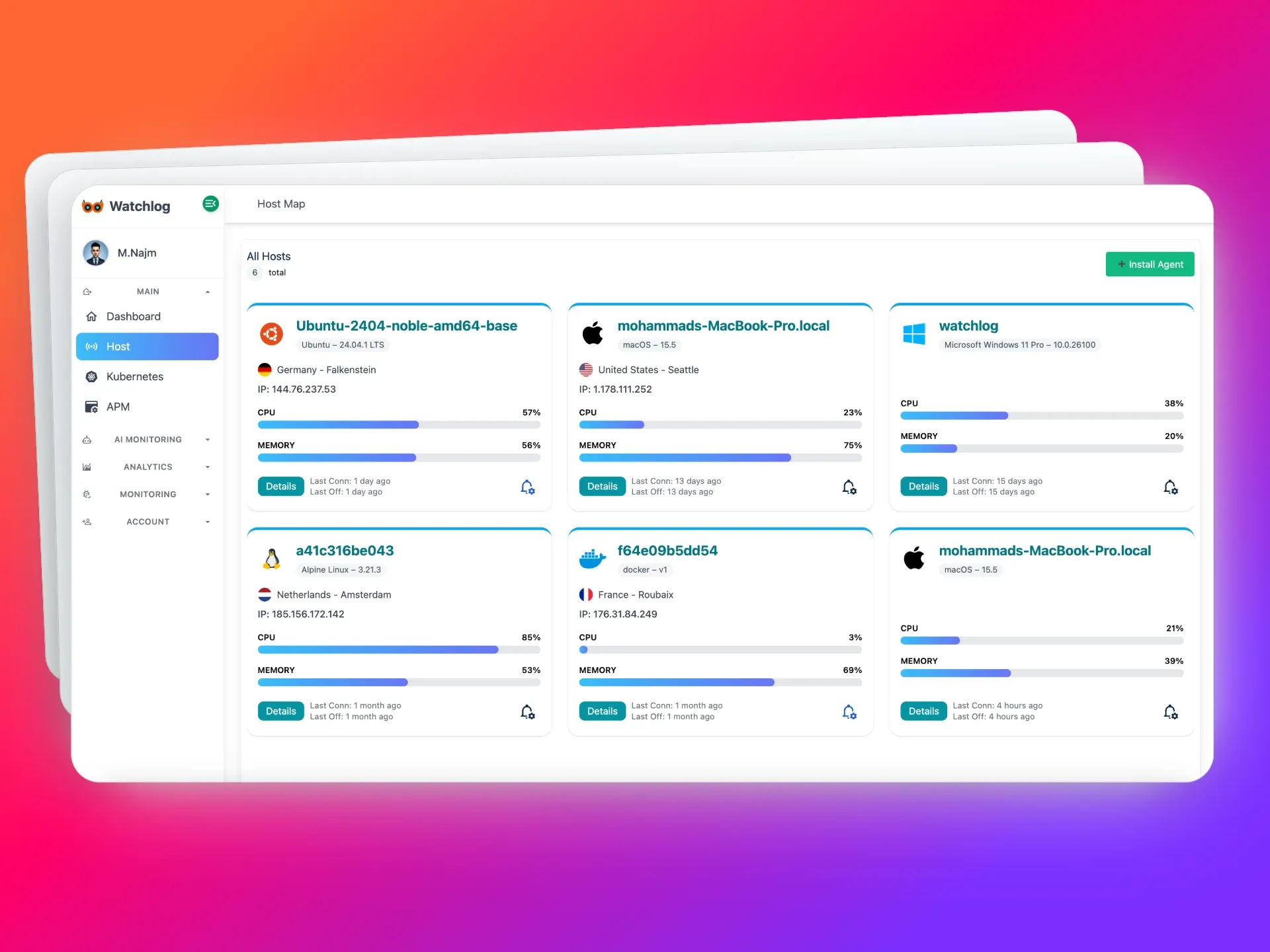Why Monitoring Matters More Than Ever in Modern Software Systems

Why Monitoring Matters More Than Ever in Modern Software Systems
In today’s fast-paced digital environment, real-time monitoring has become a necessity—not just an added convenience. From nimble startups to global enterprises, gaining accurate insights into system health through performance metrics enables teams to make smarter, faster decisions. Without reliable monitoring tools, issues often go unnoticed until they impact users directly.
What Is Monitoring?
Monitoring is the ongoing process of observing the performance of your applications, services, and infrastructure. It involves collecting and analyzing data, such as CPU and memory usage, API latency, error rates, and real user feedback—also known as Real User Monitoring (RUM).
Why Is Monitoring Essential?
- Minimize Downtime: Identify failures as they happen and resolve them quickly.
- Detect Behavioral Patterns: Spot trends in user activity or system load that may signal larger issues.
- Proactive Error Handling: Address anomalies before they escalate and affect users.
- Improve Performance: Use monitoring data to uncover bottlenecks and optimize system responsiveness.
- Boost Observability: Combine logs, metrics, and traces to gain full-stack visibility.
Monitoring Is a Mindset — Not Just a Tool
Effective observability goes beyond having a tool in place. It’s a mindset—a culture of building systems that are designed to be seen, understood, and improved. Teams that embrace monitoring as part of their development and operations processes are better prepared to manage incidents, scale confidently, and deliver reliable experiences.
How to Get Started With Infrastructure Monitoring
- Track Core Metrics: Start by collecting key performance indicators such as CPU usage, memory consumption, and network latency.
- Build Clear Dashboards: Present the data through intuitive visuals that offer meaningful context.
- Set Actionable Alerts: Create intelligent alerting rules that notify you only when it matters—reducing false positives.
Watchlog: Monitoring That Works Without the Noise
Watchlog is a lightweight yet powerful monitoring platform designed for developers who need clear insights without complexity. It supports essential integrations such as NGINX, MongoDB, Redis, PostgreSQL, log management,Application Performance Monitoring, API tracking.

With quick setup and easy-to-read dashboards, Watchlog provides real-time visibility into your systems—helping you stay ahead of performance issues and deliver smoother digital experiences.
Whether you're just launching your product or managing large-scale systems, Watchlog helps you make monitoring a seamless part of your development workflow.
Common Monitoring Mistakes and How to Avoid Them
While monitoring is essential to any modern software system, it's surprisingly easy to do it wrong. Many teams make common mistakes that reduce the effectiveness of their observability efforts—sometimes without even realizing it. Here are a few of the most common pitfalls and how you can avoid them:
Over-monitoring irrelevant metrics: Tracking too much data can be just as harmful as tracking too little. Focus on metrics that actually impact performance or user experience—like error rates, response times, memory usage, and request load.
Alert fatigue: Receiving too many alerts—especially false positives or non-critical notifications—can lead to important signals being ignored. Set intelligent thresholds, use cooldown windows, and prioritize only actionable alerts.
Ignoring frontend performance: Backend metrics don’t tell the whole story. Real User Monitoring (RUM) helps you understand how users truly experience your product, including load time, interactivity, and layout shifts.
Unstructured logs with no context: Logs that aren’t structured or tied to your metrics can be hard to interpret. Adopt structured logging practices and ensure logs correlate with key metrics to gain meaningful insights.
Monitoring only in production: Waiting until something breaks in production is too late. Extend your monitoring strategy to staging and pre-release environments to catch issues early and reduce incident impact.
Avoiding these common mistakes can drastically improve your team’s visibility, reduce downtime, and boost confidence in your infrastructure. Great monitoring isn’t just about collecting data—it’s about collecting the right data, at the right time, in the right way.
Whether you're launching your first app or managing a complex infrastructure, Watchlog helps you gain full visibility with minimal effort.
Start monitoring your stack in minutes — no complicated setup, no learning curve.

